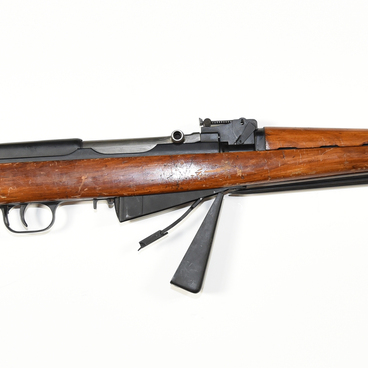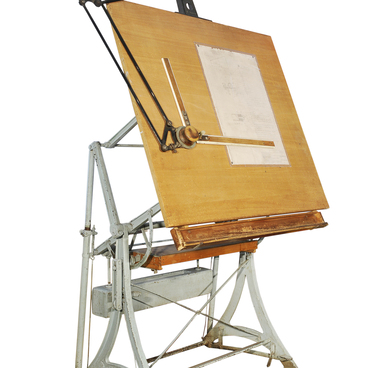World War II showed that armies rarely fired small arms at ranges more than 300–500 meters. Rifle cartridges were too powerful for such distances, and pistol ones were too weak.
In 1943, the Soviet engineers developed an intermediate 7.62×39 mm cartridge, with an 8 mm bullet diameter and a 38.5 mm case length. For this cartridge, a light automatic weapon — an assault rifle — was to be designed. In 1944, the People’s Commissariat of Defense of the Soviet Union announced a competition to create such a weapon — the lightest and most compact, reliable, and with a choice of firing mode.
The first comparative tests involved the models by Vasily Degtyaryov, Sergey Simonov, Fyodor Tokarev, Alexey Sudayev, Vasily Kuzmischev, Georgy Shpagin, and Alexey Bulkin. The Sudayev assault rifle (AS-44) was the main contender, but it did not meet all the military requirements. The Main Artillery Directorate announced a new competition in the fall of 1945, but Sudayev, who survived the siege of Leningrad, died in 1946.
Five samples, including one from Mikhail Kalashnikov, passed the draft stage of the competition. In August 1947, the Kalashnikov rifle became one of the leaders of the ground tests, and after its modification at the Kovrov Plant, it won the competition in January 1948. The first AK-47 pilot batch of 1,500 rifles was produced at the Izhevsk Machine-Building Plant, specifically for the field tests, which AK-47 successfully passed in the fall of 1948. On June 18, 1949, AK-47 was adopted by the Soviet Army.
Mass production of the Kalashnikov assault rifles was to start at the Izhevsk Machine-Building Plant. In September 1949, Mikhail Kalashnikov moved to Izhevsk and joined the chief engineer department at the plant.
The museum houses a cutaway training assault rifle that was developed during the 1950s mass production at the Izhevsk plant. The assault rifle has a two-piece wooden stock with a fixed buttstock, a charging handle, a fore-end, and a handguard. The barrel has a high front sight stud with the gas tube above. The rifle is equipped with an 800 meters ramp-type sight and a stamped box magazine.
In 1943, the Soviet engineers developed an intermediate 7.62×39 mm cartridge, with an 8 mm bullet diameter and a 38.5 mm case length. For this cartridge, a light automatic weapon — an assault rifle — was to be designed. In 1944, the People’s Commissariat of Defense of the Soviet Union announced a competition to create such a weapon — the lightest and most compact, reliable, and with a choice of firing mode.
The first comparative tests involved the models by Vasily Degtyaryov, Sergey Simonov, Fyodor Tokarev, Alexey Sudayev, Vasily Kuzmischev, Georgy Shpagin, and Alexey Bulkin. The Sudayev assault rifle (AS-44) was the main contender, but it did not meet all the military requirements. The Main Artillery Directorate announced a new competition in the fall of 1945, but Sudayev, who survived the siege of Leningrad, died in 1946.
Five samples, including one from Mikhail Kalashnikov, passed the draft stage of the competition. In August 1947, the Kalashnikov rifle became one of the leaders of the ground tests, and after its modification at the Kovrov Plant, it won the competition in January 1948. The first AK-47 pilot batch of 1,500 rifles was produced at the Izhevsk Machine-Building Plant, specifically for the field tests, which AK-47 successfully passed in the fall of 1948. On June 18, 1949, AK-47 was adopted by the Soviet Army.
Mass production of the Kalashnikov assault rifles was to start at the Izhevsk Machine-Building Plant. In September 1949, Mikhail Kalashnikov moved to Izhevsk and joined the chief engineer department at the plant.
The museum houses a cutaway training assault rifle that was developed during the 1950s mass production at the Izhevsk plant. The assault rifle has a two-piece wooden stock with a fixed buttstock, a charging handle, a fore-end, and a handguard. The barrel has a high front sight stud with the gas tube above. The rifle is equipped with an 800 meters ramp-type sight and a stamped box magazine.

